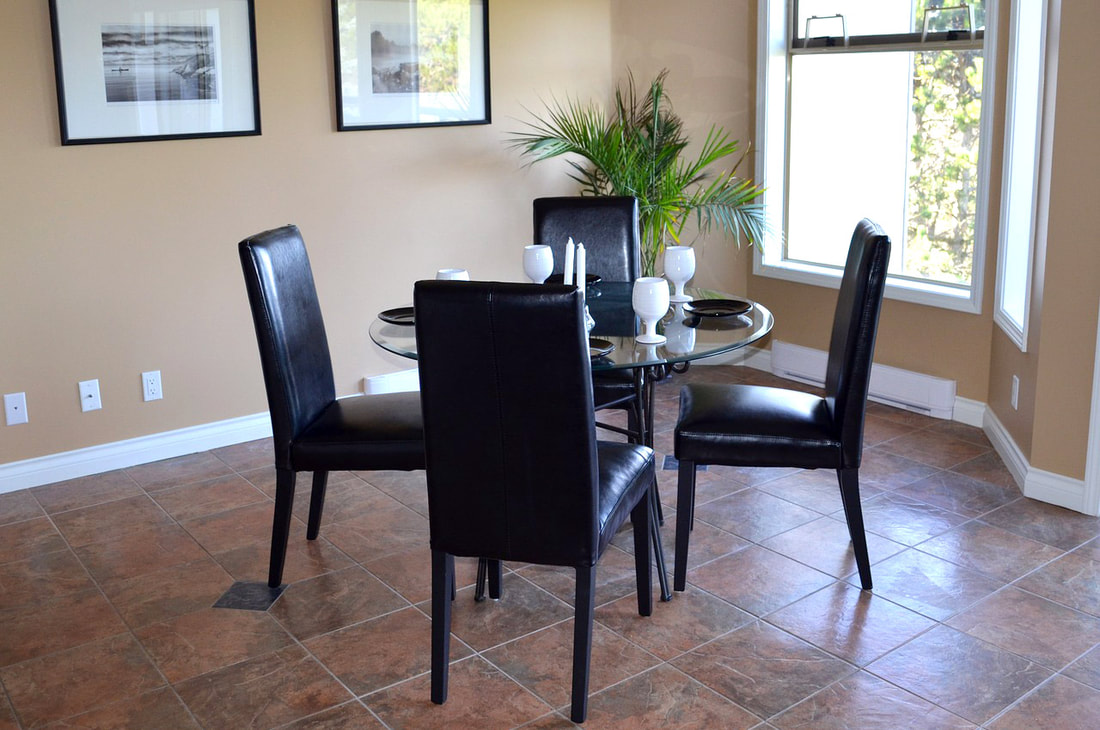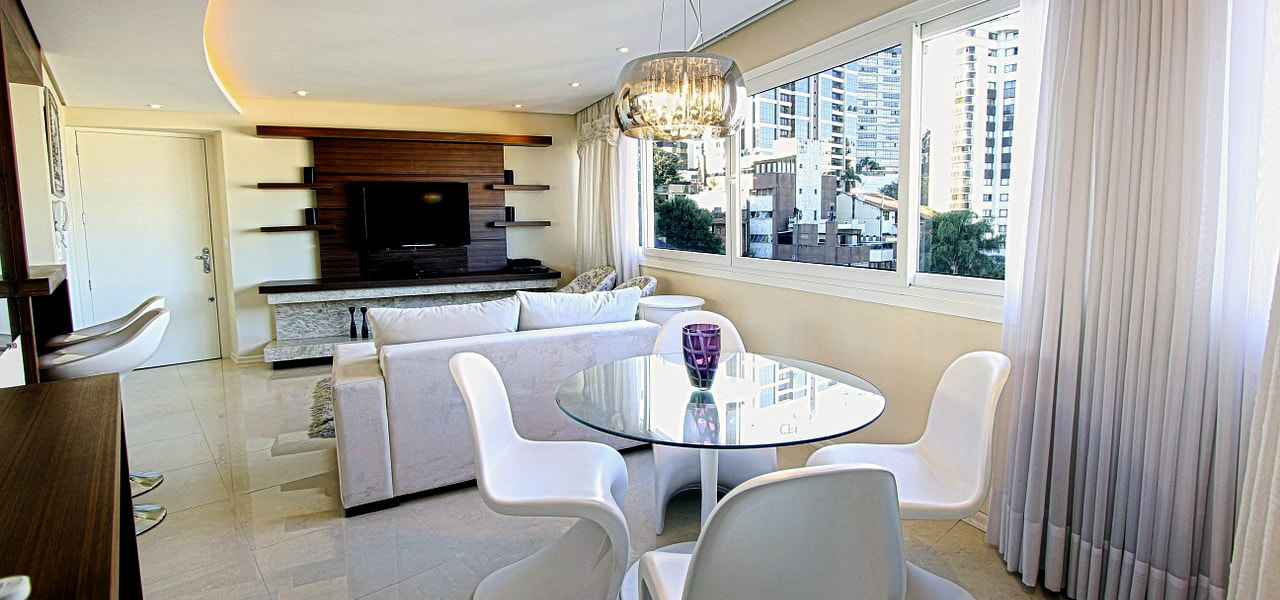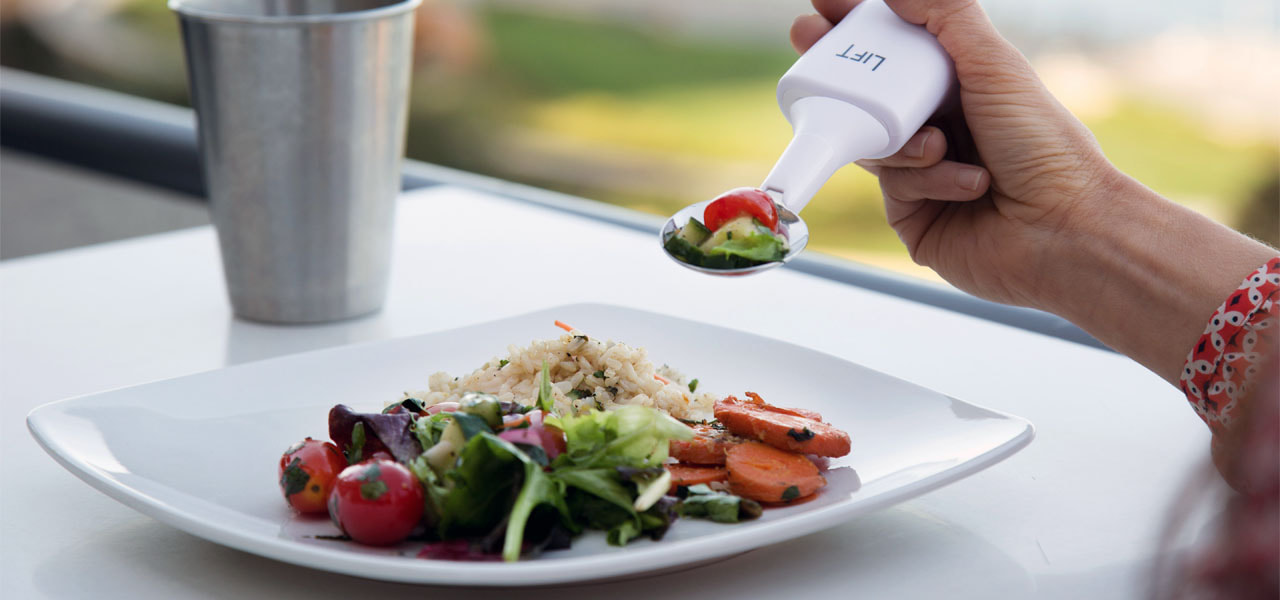Aging in Place by Room - Part 27 - Dining Room Flooring, Lighting, & Meal Serving Equipment10/24/2019
By Anna Hazard
Introduction
Besides the general layout and furniture contained within the dining room, the specific type of flooring and lighting present can also be optimized for properly aging in place and accessibility. In addition, there are a variety of utensils, tools, and other ableware meant for use during meals (whether they are served within the dining room or elsewhere) that can be very beneficial for a senior or someone with health conditions or physical disabilities.
Flooring & Lighting
Similar to the kitchen, the dining room should have a hard floor made of a material that is non-glare and non-skid as well as being easy to clean & maintain while being water or liquid resistant in the case of food or beverage spills. While not as necessary as with the kitchen, a floor with a slight texture for easy grip of the feet is always helpful in preventing falls. Carpets should still be generally avoided in this area due to the greater likelihood of spills and droppings from meals.
Some of the most common hard floor materials used in the dining room include vinyl and hard wood with more exotic offerings such as linoleum/marmoleum and rubber also being valid options. Once again, due to the likelihood of spills in the area, sheeting is recommended over tiling due to the lack of grouts and joints with the former creating a more liquid proof barrier. As with other areas of the household, it's recommended that the floor be light colored and non-shiny to help brighten the overall look without causing further glare. Intricate patterns in the flooring should still be avoided due to the possible visual acuity problems they may cause (especially prone for those with Alzheimer's or dementia). Having light colors in other areas (such as the painting on the walls or color of the furniture) can also be used to help brighten the appearance of the room without having to increase the actual level of lighting. Similar to the rest of the household, the lighting within the dining room should be ambient and diffused so that it does not create any glare. Lighting in this particular area is important as it will need to be bright enough for users who may have both hearing or visual problems to easily be able to read other people's lips and manipulate their handheld utensils while dining. If the dining room is not entirely enclosed, then windows can be a good source of natural lighting (with sheer or woven shades to diffuse the light and reduce glare which can become more problematic with aging eyes). Meal Serving Equipment
Another kitchen essential to many would be easy to maintain and non-breakable (especially durable enough to survive being dropped a few times) dishware and utensils. Hard plastic tends to be a popular material option that is also often found in large handled or universal design utensils that can be more readily used by those with arthritis, shaking hands, or other hand dexterity or strength issues.
In particular, weighted utensils are often used to help steady the grip of those with hand tremors, angled handle utensils are helpful for those with more deformed grips or severe hand dexterity issues, while utensils with thick, soft, or comfortable grip handles that are contoured to the shape of the hand are good for arthritis and other hand strength issues. Another option would be adding slip on soft holders, grip aids, and universal utensil holders to normal utensils in order to convert their handles to a bulkier shape that is easier to grasp. Hand clips, grasping cuffs, and strap holders which are latched unto the hand or wrist can be used for those who have trouble maintaining their grip on the utensil or are otherwise prone to dropping them. These types of utensils are also often paired with arthritis styled cups & plates which are also made of non-breakable and easy to clean material. Adaptive dishes tend to have raised rims and scooped designs for ease of use while preventing the spillage of food over the sides. Plate bumpers, guards, as well as plates with inner lips can be used to a similar effect. Otherwise, there are slanted dishes and bowls for easier hand access while manipulating a utensil as well as weighted bowls & cups or those with suction or nonskid bases that act as a preventative from having a plate or bowl of food accidentally knocked over. Otherwise when it comes to beverage holders, cups, mugs, & glasses are recommended to either be double handled or have a wide textured body for easy gripping. In particular, spill proof cups with lids, detachable straws, and spouts for easy pouring tend to be the style that gives the easiest access to the widest range of people. Cup lids with straw attachments or nosy cups with one section of the cup pared away for easy access are recommended for those seniors who may have trouble drinking from a tilted container. In studies of the elderly, nosy cups tend to have faster drink times with more liquid consumed, but are also more prone to have spills. On the other hand, straw attachments tends to lead to an easier time swallowing with less extraneous liquid spilled and thus are the best choice for those lacking the hand strength or dexterity to lift a cup to their mouth as well as those with mild dysphagia. Much like bowls & plates, no tip weighted cups with suction & non-skid bases are also available to help mitigate accidental spills and drops. Insulated cups may also be a good choice for an aging in place home as they will keep beverages hot or cold as necessary for a more extended period of time, which is a benefit to those seniors who take longer in finishing their drinks due to age or a health condition. When cleaning time comes for the dishware, bottle & cup brushes with suction bases can be installed for easier washing near the sink or dishwasher. View the Rest of the Series
Part 1 - Introduction
Part 2 - Exterior Part 3 - Landscaping & Gardens Part 4 - Patio, Porch, & Deck Part 5 - Garage & Carports Part 6 - Entrances, Exits, & Thresholds Part 7 - Exterior Steps & Ramps Part 8 - Threshold Lighting & Windows Part 9 - Interior Doors & Halls Part 10 - Interior Steps & Staircases Part 11 - Interior Stairlifts Part 12 - Interior Elevators Part 13 - Interior Lighting Part 14 - General Interior Flooring Part 15 - Interior Flooring Comparisons Part 16 - HVAC & Energy Efficiency Part 17 - Power, Communications, & Other Interior Systems Part 18 - Living Room Part 19 - Kitchen Layout, HVAC, & Electrical Systems Part 20 - Kitchen Lighting, Flooring, and Sink Faucets Part 21 - Kitchen Countertops & Cabinets Part 22 - Kitchen Refrigerators, Freezers, and Dishwashers Part 23 - Kitchen Ovens, Ranges, Stovetops, and Cooktops Part 24 - Kitchen Microwaves, Blenders, & Food Processors Part 25 - Miscellaneous Kitchen Items Part 26 - Dining Room Layout, Tables, & Other Furniture Part 27 - Dining Room Flooring, Lighting, & Meal Serving Equipment Part 28 - Bedroom Layout & Closets Part 29 - Accessible Beds Part 30 - Bedroom Furniture, Electronics, & Other Accessories Part 31 - Bedroom Flooring Part 32 - Bedroom Lighting Part 33 - Bathroom General Layout Part 34 - Bathroom General Tips for Showers & Tubs Part 35 - Bathroom Accessible Tubs Part 36 - Bathroom Accessible Showers Part 37 - Laundry Room
0 Comments
Leave a Reply. |
AboutNews updates, tips, and guides on senior care, senior health, stress relief and a host of other caregiving related topics from the professionals at Ella Stewart Care. |





 RSS Feed
RSS Feed
